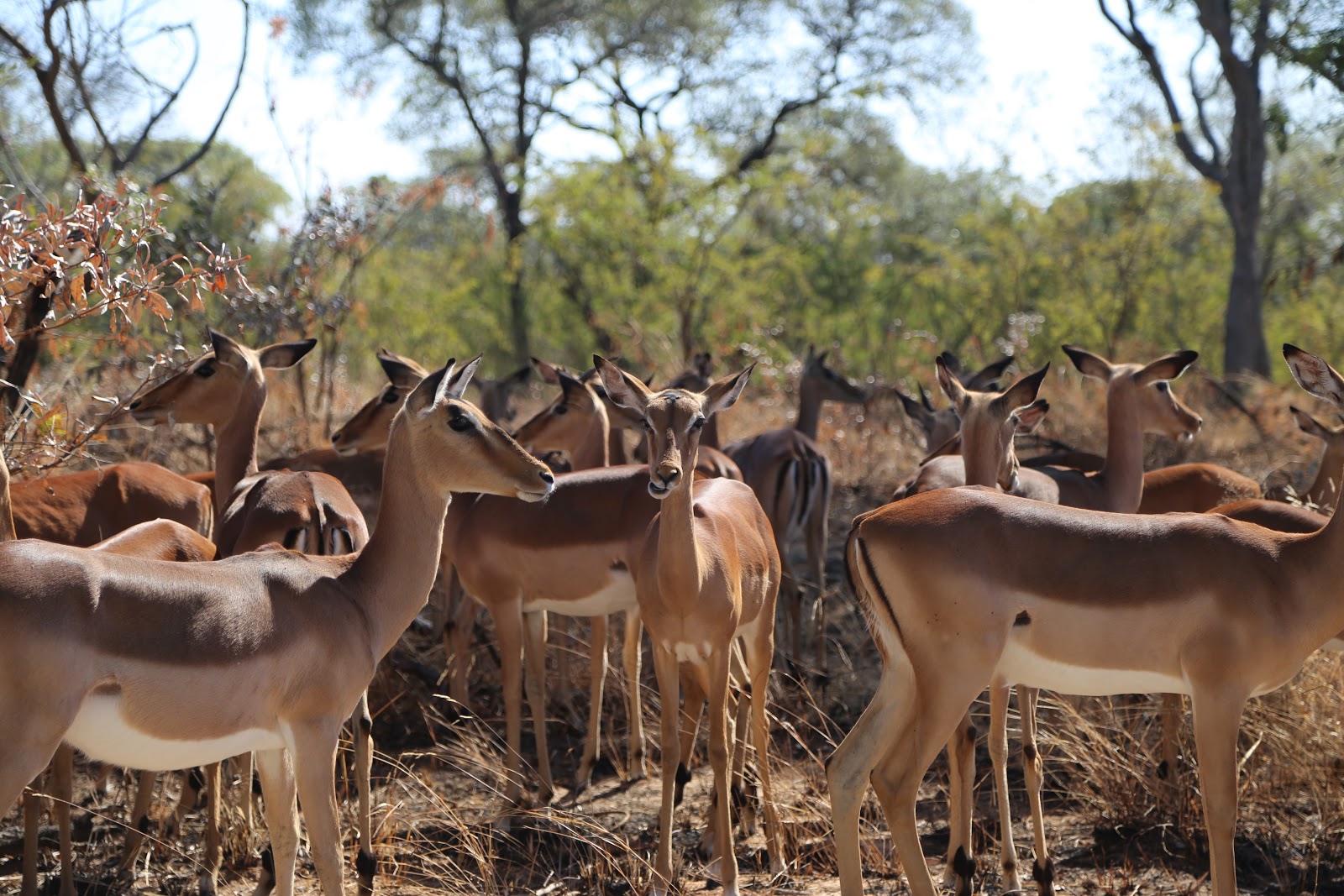
Courtesy of Carla Staver
Associate professor of ecology and evolutionary biology Carla Staver recently co-authored a study published in Science Advances that identifies a relationship between diet composition of herbivores in the African savannah and the relative abundance of their populations.
Alongside her collaborator Gareth Hempson, research fellow at the School of Animal, Plant and Environmental Sciences at the University of the Witwatersrand, Staver characterized how diversified diets benefit herbivores, compared to those that only eat one plant type throughout the year. They found that populations of impala, whose diets consist of both grass and shrubs, are extremely high in the African savannah, while populations of herbivores that exclusively consume either grass or trees and shrubs are less prevalent.
“Savannahs are highly seasonal systems, and so sometimes there’s a wet season and there’s a dry season, and during the wet season animals are eating high-quality good forage, and there’s a lot of it around,” Staver said. “But then there’s this period of scarcity that happens predictably every year, and the species that are switching to eating something else — essentially switching from a preferred but to a still pretty good source of food during the dry season — are the ones that are achieving high population sizes. Whereas the species that basically keep eating the same thing, even when the food quality is worse, those are the species that don’t achieve as high population numbers.”
The researchers analyzed this relationship between diet composition and population abundance by synthesizing existing data on both variables. African savannahs have two major types of plants: trees and grasses. Since grasses have a slightly different carbon composition than trees, Staver and Hempson were able to use published carbon isotope estimates from herbivore dung to estimate how much tree versus grass forage these herbivores were eating. For the herbivore population size estimates, they used published site-specific and park-specific population monitoring data.
Staver developed the theoretical models for the study, while Hempson provided the datasets by collating and analyzing herbivore census data from eastern and southern Africa. This dataset was previously published by Hempson in 2015 in Science.
This type of mixed feeding — in which species have a mechanism for moving their diets from a preferred source to an equally good source of nutrients that is not preferred — is called dietary migration, according to Staver. This phenomenon exists alongside another migration mechanism, known as spatial migration, where species change their diet seasonally by moving from one place to another.
“Our results are significant because they identify a previously unrecognized, general mechanism that underpins high population abundance of certain species, as well as the necessary conditions for this mechanism to be effective,” Hempson wrote in an email to the News. “Diet switching, the effects of which we explored in our research, operates in a manner analogous to that of spatial migration, by allowing herbivores to track the optimal food resources in a landscape through the seasonal cycle.”
Mixed feeding can be advantageous for herbivores, as long as it is not inefficient. If their flexible diet allows them to be almost as good at resource absorption as when they only eat one plant type, then they will gain from this adaptability and will be more resilient to environmental changes, such as the dry season or food scarcity, Staver said.
For these dietary migrations to result in higher population levels, there needs to be a change in the optimal food resource, and the costs to the herbivores of shifting diets need to be low. Species that have evolved the ability to switch their diet in this way are said to have “specialized as generalists,” according to Hempson.
“Mixed-feeder disadvantages may be more severe if mixed feeders, as generalists, are less efficient grazers than grazing specialists and less efficient browsers than browsing specialists,” Staver and Hempson’s article reads.
Climate change is likely to result in more frequent droughts and prolonged periods of forage deficits, as well as land use change that restricts animal movements. Because mixed feeders can maintain their food supply without having to travel long distances, they are likely to be the most abundant herbivore species in an increasingly human-modified world. This prediction has implications for both future wildlife conservation and the management of rangeland for animals such as cattle.
The benefits of a diverse diet for herbivores may also apply to humans. Staver compared the mixed-feeder adaptability to decisions that humans can make to utilize their resources in the best way possible.
“The question is, if you used to make a lot of money selling people trousers and suits and stuff, and suddenly you’re in a pandemic context, and you now aren’t going to make money from selling people suits and stuff, you have two options available to you,” Staver said. “One is that you sell less clothes, and the other is that you change what you’re providing in order to sell a different product. Essentially what you’re doing there, if you’re switching what you’re making available, what you’re doing is what the mixed feeder is doing. You’re changing your resource use strategy to be more dynamic.”
Hempson answered questions about their research on South African television, and a talk from the Staver Lab can be accessed here.
Anjali Mangla | anjali.mangla@yale.edu







